The Eleventh Hour
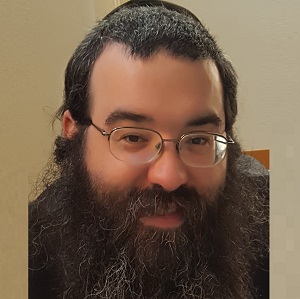
Rabbi Dovid Keleti won't give up on Hungary's Jewish future
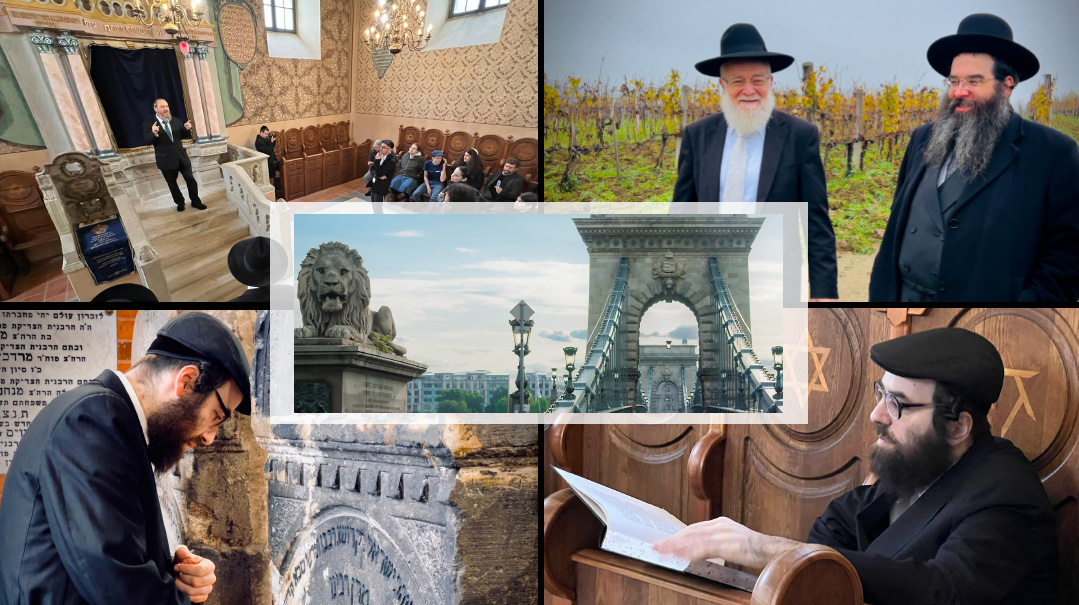
Photos: Koszegi Zoltan
The heimish building boom is surging across the Hungarian plain. From Kerestir and Csenger to Kaliv and Ihel, complexes are rapidly rising to host accommodations for the thousands of annual visitors to mekomos hakedoshim. A tourist visiting one of these locations during any time of the year will easily find a hot meal, a comfortable bed, and a beis medrash with amenities that rival what he’s used to back home.
What the visitor likely won’t meet in any of these tourist hot spots is a local Hungarian Jew. Virtually all of Hungary’s native Jews live in Budapest, while to the average frum visitor, Budapest is merely a stop on the way to Kerestir.
The city’s off-the-radar status has churned up some bittersweet emotions among the small cadre attempting to revive a Torah atmosphere in this land of the Chasam Sofer and Rav Yehuda Assad, Rabi Akiva Eiger, and the Yismach Moshe.
“I never understood or appreciated the average Hungarian Jew’s thirst for Yiddishkeit,” says Yochi Herzog, the president of Kedem Wine. “There are a lot of people of Hungarian descent who are not aware of what’s going on. They should spend a Shabbos there. These are your own roots. Go help! It’s your achrayus.”
Herzog is a descendant of the famed Baron Herzog winemaker family from Slovakia, and his parents would regularly return to their hometown of Verbo to upkeep the cemeteries and shuls, provide chizuk to the few Yidden they met there, and visit the non-Jews who helped save the family during the war.
The tradition continues to this day, with the entire extended family going for a weeklong trip to Hungary every few years.
“We’re already the third and fourth generation of Herzogs who go back,” Herzog said. “We take a busload of cousins and we see the house where my father was born, we see the old Kedem winery. My nephews see me and they’re always asking, ‘When are we going back to Hungary?’ It’s such an exciting thing for them.”
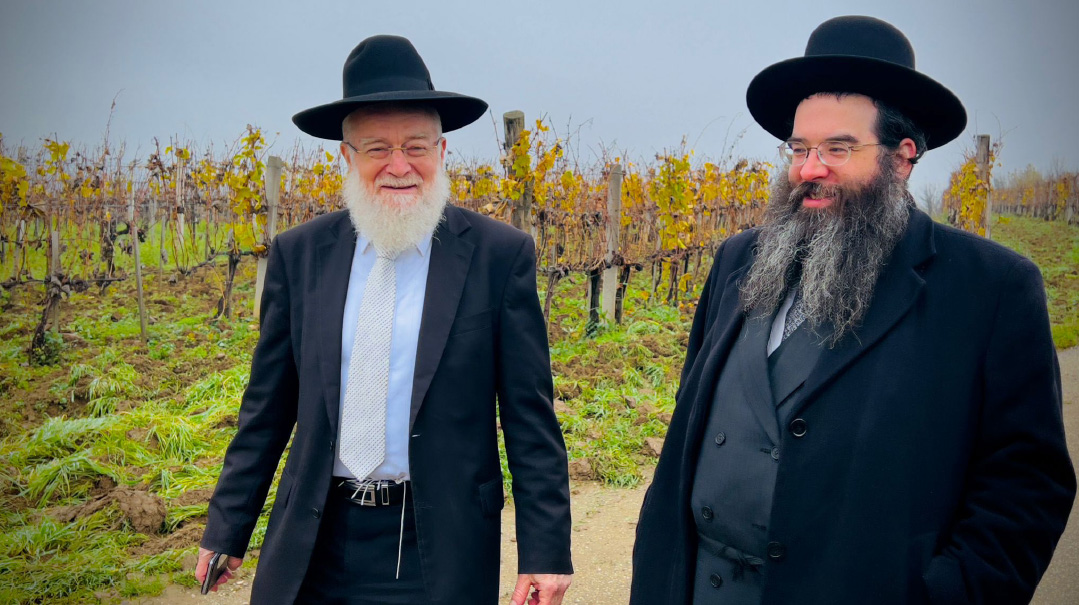
Hungary’s unlikely teshuvah hero Rav Keleti with Mishpacha’s Yochonon Donn. The lack of frum infrastructure means that the kiruv success stories move elsewhere
On the Front Lines
Herzog is an early and enthusiastic board member of the Lativ Foundation — short for “L’maan Tichyeh Yahadus B’Hungaria (To Revive Judaism in Hungary)” — founded 15 years ago by Rav Dovid Keleti. The unlikely hero of Hungary’s kiruv movement, the Hungarian-born Rav Keleti was a successful maggid shiur in a yeshivah in Eretz Yisrael when he left it all behind to devote his heart and soul to his brothers in Hungary.
Dovid Keleti was a young boy of eight when his parents fled Hungary in 1956. His father, who had lost his family in the war and remarried afterward, had settled down in his native city of Debrecen. But in the ensuing years the noose of communism drew ever tighter, and the Keleti family took advantage of the short-lived Hungarian revolution of 1956 to escape, in the week before Soviet tanks rolled into Budapest and crushed the uprising.
The Keletis moved to Eretz Yisrael where Dovid became a close talmid of Rav Nochum Partzovitz in the Mir. While he was happily settled, the fate of Hungarian Jewry began to gnaw at him. While tens of thousands of Jews across the world were being chozer b’teshuvah, Hungary remained a stubborn anomaly. Rav Keleti initially began traveling to Hungary once a month for a week’s time to deliver shiurim, but after some time, in 2007, he concluded that a more formal framework was necessary. He consulted with three gedolim — Rav Yosef Shalom Elyashiv, Rav Aharon Leib Steinman, and the Belzer Rebbe — and while none of them are of Hungarian descent, they understood what had to be done.
“The instructions I got from Rav Elyashiv, Rav Steinman, and the Belzer Rebbe were that I must build a makom Torah in Hungary,” Rav Keleti said. “It’s not enough to have them put on tefillin or keep Shabbos. Hungary must become a makom Torah.”
The Belzer Rebbe gave him a one-word instruction — “start” — along with the first $5,000.
“It wasn’t enough for netilas yadayim,” Rav Keleti said, “but it was a start.”
Hungary’s tiny Orthodox community is centered in the capital, Budapest, but the numbers presented to me were stark. Out of Hungary’s 90,000 Jews, only about 30 of them are frum. Not 30 percent, itself a cryingly low figure, but 30 people.
But Lativ, through a relentless program of schmoozing, shiurim and shabbatons, is slowly having success, one baal teshuvah at a time. Hundreds of people, from university students to professionals, have begun to embrace a Torah way of life. Rav Keleti opened a cheder, and the level of learning is equal or surpasses that of established Jewish communities elsewhere in Europe. Dozens of students from the cheder and girls’ school have married each other and are building Yiddishe homes.
But while Lativ is successfully drawing many Hungarian Jews closer to Yiddishkeit, the lack of frum infrastructure means that almost all the baalei teshuvah ultimately move elsewhere, to more established communities.

Kerestir is the beating heart of Hungary’s frum community, offering an attraction to Yiddishkeit that often ends in a commitment. “Every person here has problems. Speak to the holy rabbi. If you care about it, he cares about it”
Remnants of Yesteryear
On a recent trip to Hungary to attend a Lativ shabbaton, I got to see some of their incredible work up close. The shabbaton itself took place in the small countryside village of Tarcal, a few minutes’ drive from Kerestir and about two and a half hours away from Budapest, and I took advantage of my stay to do some touring.
Budapest’s most famous Jewish sites are the Kazinczy Street shul and the Hanna Garden restaurant, both located in a courtyard along Kazinczy Street, a fascinating throughfare that combines elements of modernity and a slum-like throwback to the prewar era.
I had previously heard of the Kazinczy Street shul and, given that this was my first visit to Hungary, took a walk around. It’s a small shul by international standards, with dim lighting and a slightly musty scent. In 150 years of operation, it has never closed down once, I was told.
I was especially riveted by the shelves filled with large blue siddurim which contained piyutim for a dozen Shabbosos throughout the year. I had heard that the authentic nusach Ashkenaz has many more piyutim than are said in most places, but this was the first time I’ve seen them in a siddur.
The very fact that a Hungarian shul would be strictly nusach Ashkenaz surprised me. Someone explained that while most people would daven nusach Sefard in the ubiquitous shtiblach, the main shul invariably stuck to nusach Ashkenaz.
The Hanna Garden restaurant claims to be running nonstop since 1920, which would be remarkable for a kosher diner considering the events of the 1940s, and the toll 45 years of Communism had on the country. The manager, hearing it was my first time in Hungary, insisted that I taste his “goulash soup.” He returned with a bowl of red soup, under which swam a veritable army of meat and potatoes. Surprisingly, it tasted just like goulash tastes in New York.
Aside from the 30 Hungarian stalwarts, an array of guests from abroad had come for the shabbaton, nearly 100 people altogether, and we did some more traveling together.
On Friday morning we left Tarcal and visited the nearby villages of Mad and Kerestir. I learned that Mad had a thriving metropolis of Yiddishkeit before the war, but that it had been almost completely wiped out. Rabbi Menachem Nissel, a kiruv professional who arrived from Eretz Yisrael for the shabbaton, explained that the Nazis had divided Hungary into five districts and deported four of them to Auschwitz in the summer of 1944. Budapest’s Jews were saved, however, since the Russians conquered it before the Germans were able to enact their diabolical plans.
In Mad, the Rav’s house and nearby shul were still standing, refurbished by the Hungarian government’s ministry of culture. The Rav’s house has been turned into a museum, with signs in Hungarian and English explaining concepts such as kosher and chassidism. A woman gave a long talk in a lilting Hungarian. I picked up a word or two every once in a while, such as “Kol Aryeh,” the Hungarian gadol whose son later served as rav of Mad, and “Chasam Sofer.”
Speaking in the great shul, with its high domed, colorfully decorated ceiling, Rabbi Nissel addressed the members of Lativ ahead of our visit to Kerestir — and its most famous inhabitant, Rav Shaya ben Reb Moshe.
“Every person here has got problems,” he said. “Speak to the holy rabbi. If you care about it, he cares about it.” He described the difference between how the Jews in Lita and Hungary viewed kivrei tzaddikim. “In Lita,” he said, “they looked at a kever of a tzaddik as a makom kadosh, a holy place where tefillos were more likely to be accepted. But we Hungarians believe that the tzaddik is right there and we can speak to him and ask him to daven for us.”
The village of Kerestir — Bodrogkeresztúr in Hungarian, since it is located along the winding Bodrog River — is a sleepy one, with a single one-lane road bisecting it. Close your eyes for 20 seconds as you drive through and you’ll miss the entire village. Dozens of stork nests are placed atop 50-foot poles along the roadside, for a reason no one there could explain. As we passed through to get to the beis hachaim on the village’s outskirts, a worker on a lift was fixing a stork nest.
Kerestir is located in the heart of the Tokaj wine region. Every home we passed had grapevines growing in the garden. Miles of vines, grape mills and wineries were everywhere we went. Yet more than the wine, the kever laying at the edge of the town, surrounded by no more than several dozen others, has proved intoxicating to the Hungarian Jewish soul. Kerestir is the beating heart of Hungary’s frum community, drawing people from all over and offering an attraction to Yiddishkeit that often ends up in a commitment.
The casualness about Reb Shayala’s house surprised me. The medium-sized kitchen where he led his tish and the small room on the side where he accepted kvitlach didn’t appear to be enshrined, hardly conveying the reverence with which other kehillos treat the rooms of their previous manhigim. I questioned a local about it and he explained that this was the aura of Reb Shayala, who wanted Yidden to feel comfortable. As the ancient proverb goes, “His gashmiyus is my ruchniyus.”
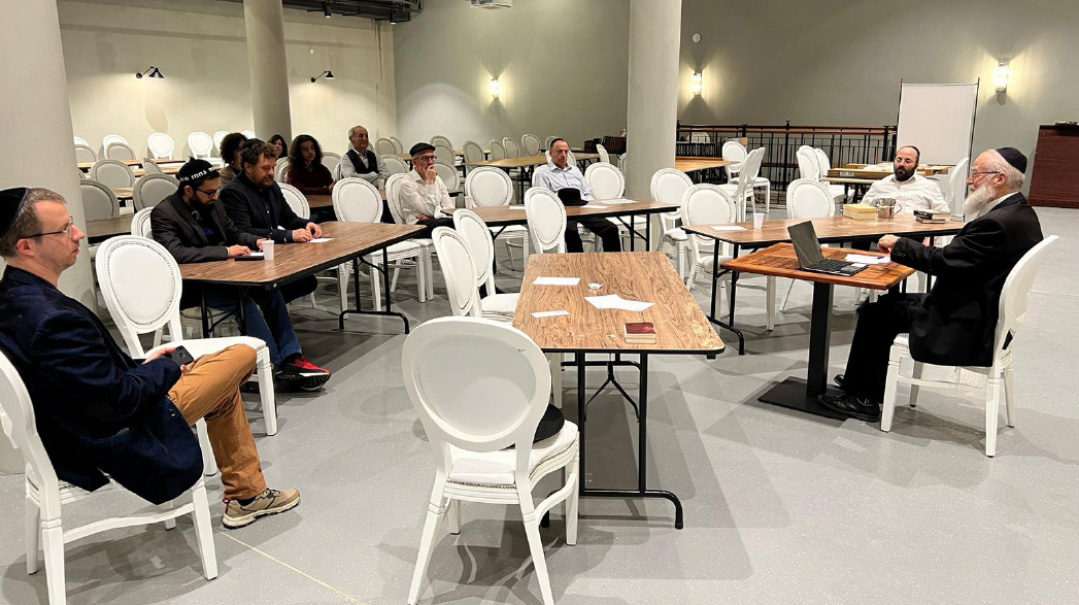
Cautious but Invested
The Hungarian guests in attendance at the shabbaton provided a fascinating window into Lativ’s work. The translator for the Shabbos was Shaul (Paul) Hegedus, who has a PhD in mathematics from the University of Cambridge and who is a professor at a Budapest college. Then there was Yochonon, a former university student who gravitated to Lativ years ago, who spoke at the seudah Shabbos morning. I speak not a word of Hungarian but the path of his derashah was clear from the Hebrew terms liberally sprinkled in, such as “zerizim makdimim l’mitzvos,” “tefillin” and “esrog.” Yankel Zemmer, a shtreimel-clad Israeli expat who married a local girl and moved to Budapest, tells me that Yochonon is his chavrusa and a real talmid chacham.
Some neolog (Reform) students were here for Shabbos, which was a big deal. One of them had been attending Lativ’s shiurim for a while but abruptly pulled away six months ago. He agreed to attend the shabbaton, and informed Rav Keleti on Friday night that he was returning to the program.
There are even some people in the process of geirus. Adam, the man who drove me around, works as a fire inspector for the municipality. His father is Jewish, and his association with the community led him to express interest in converting. He was supposed to have finished the process in 2020, but Covid delayed things. He now expects to become a member of the tribe within several months.
Aside from Adam, Rav Keleti tells me there are others who are in the process of geirus as well.
I learn that there are three main kiruv challenges that are unique to Hungary. One, very few people who can do kiruv are familiar with this hard-to-speak language. Two, secular Jews almost uniformly avoid any contact with frum Jews, mostly out of fear of being associated with a group that was persecuted during World War II and during Soviet rule. One person tells me, “When I walk down the street, sometimes a person will pass and purposely look away or have a flustered look on his face. When I see that, I know that they are Yidden.”
The third challenge is a familiar one — like in the States, university is the single biggest assimilationist program here. Students are taught to think philosophically, and they see no need for Yiddishkeit in their lives. “They’re not so much against it as much as they think, what do I need it for?” one person I met at the shabbaton told me.
But in a more positive light, while the Hungarian Jew may be probing and cerebral, once they are in, they’re all in.
“Hungarians,” Rav Keleti explained, “have a tendency to go for the extremes. [Hungary has produced] Yair Lapid on one side and Neturei Karta on the other side. I see it here also. It takes them time to become frum, but once they do it, they do all the way.”
One man who agreed to undergo a bris milah asked Rav Keleti if he could sing during the process. This, one person remarked to me, was “an ingarishe shaila,” a question that could only come from the temimus of a Hungarian Yid. He sang the familiar Breslover tune of “Kol Haolam Kulo” as he was circumcised.
Ironically, though, Lativ’s success is preventing Rav Keleti from building on it. Budapest’s kehillah is in its infancy, so talmidim and baalei teshuvha who desire to raise a Yiddishe family are forced to move elsewhere, usually to Vienna or Eretz Yisrael. “Every success story means that another person leaves Hungary,” one person tells me.
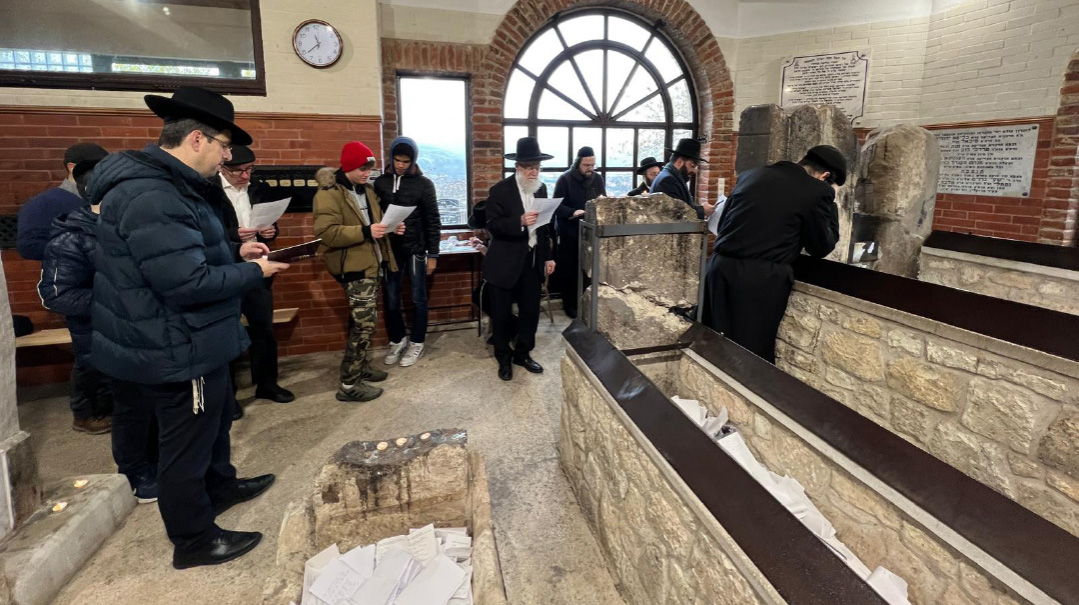
Sounding the Alarm
Rav Keleti, who is in his 70s by now, is the rare breed who speaks a fluent Hungarian, has tremendous passion for what he does, and is graced with a charm that endears him to people to convince them to turn their lives around and embrace Torah and halachah. “Rav Dovid Keleti, in my opinion, is a lamed vovnik,” Yochi Herzog tells me. “He’s a tremendous talmid chacham, he speaks Hungarian, and he goes there every Yom Tov. But while he gets the sechar for bringing them back, he doesn’t have a kehillah.”
He’s well aware of the catch-22 he faces. “But what can I do? I have to do what’s best for them,” he says with a shrug, adding that “We continue helping them where they are, with housing and whatever else they need.”
“Rav Keleti is so purely l’Sheim Shamayim,” Rabbi Nissel tells me, “that I would not be surprised if Hashem gives him hatzlachah beyond derech hateva.”
Rav Keleti spends every Yom Tov and many Shabbosos in Hungary, away from his family, and roves the world throughout the year to spread the message of the ticking time bomb that is Hungarian Jewry as he seeks donors to finance his activities. Just this past Chanukah, he was with his people, dedicating the event in memory of Albert Reichmann z”l, the Toronto philanthropist who was niftar days earlier, who was active in helping Eastern European Jewry.
Rav Keleti had started out his efforts optimistically, assuming it would not be difficult to engage the hundreds of thousands of Yidden with Hungarian ancestry worldwide. So much money was poured into preserving the cemeteries of their forebears, he figured, that certainly they would want to divert part of the funds to preserve the living Jews in Hungary. But fundraising remains a perennial challenge.
“It’s the shabbatons that do it,” Herzog adds, explaining that so much more could be done if Rabbi Keleti could train in another two or three people and hold more shabbatons.
“If people of my generation, children of Hungarian survivors, step up to the plate and help Rav Keleti raise $75,000 to $100,000, he could make hundreds more baalei teshuvah,” he says.
Rav Keleti himself expresses his incredulity that others are not sounding the alarm. “It’s amazing to think,” he tells me, “that you have 90,000 Yidden in the center of Europe who don’t know anything about Yiddishkeit — who don’t even know the alef-beis — and nobody cares. We’re standing at the eleventh hour to save these 90,000 Hungarian Yidden. And it’s the responsibility of Klal Yisrael to do it.”
(Originally featured in Mishpacha, Issue 943)
Oops! We could not locate your form.







